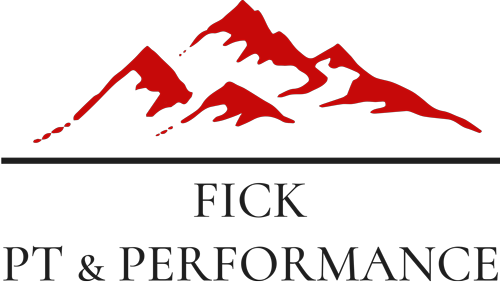Aufwerber S, Heijne A, Edman G, Silbernagel KG, Ackermann PW. Does early functional mobilization affect long-term outcomes after an Achilles tendon rupture? Orthopedic Journal of Sports Medicine. 2020; 8(3):1-9.
Abstracted by Gina Fick, PT, ScD, COMT Castle Rock, CO – Fellowship Candidate, IAOM-US Fellowship Program & Jean-Michel Brismée, PT, ScD, Fellowship Director, IAOM – US Fellowship program
Research: To determine if early functional mobilization counteracts the negative impacts of ankle immobilization after an Achilles tendon repair, such as excessive tissue elongation, calf muscle atrophy, or deep venous thrombosis.
Methods: A total of 135 patients between the ages of 18 and 75 years (mean age 39.4 ± 8.1 years) who underwent Achilles tendon repair within 1 week of injury were randomly placed into either an early functional mobilization group or a standard treatment group. The early functional mobilization group included immediate postoperative weight bearing and active ankle motion in a dynamic orthosis. The orthosis was initially set to 15 to 30 degrees of plantar flexion with weight bearing as tolerated. At 2 weeks, the range of motion was increased to 5 to 30 degrees of plantar flexion for the following 4 weeks, and full weight bearing was allowed. Patients in the early functional mobilization group were encouraged to perform unloaded plantar flexion exercises immediate postoperatively for 1 hour per day without the orthosis. Patients in the standard treatment group included 2 weeks of non-weight bearing in a below-knee plaster cast, followed by 4 weeks of weight bearing in an orthosis that was fixed at the ankle joint. At 6 weeks the orthosis was discontinued in both groups, and patients were advised to wear normal shoes with a heel lift on the injured side for an additional 4 weeks. Patients completed 5 self-administered questionnaires at 6 and 12 months postoperative-ly, which included the Achilles tendon Total Rupture Score, Physical Activity Scale, RAND 36-Item Health Survey, Foot and Ankle Outcome Score, and the Tampa Scale of Kinesiophobia, Swedish version. The Mann-Whitney U test was used to compare differences between groups in the outcome questionnaires. A paired Student t test was used to comparisons between heel rise variables at 6 and 12 months postoperatively
Results: At 6 months, the early functional mobilization group scored significantly higher on the RAND 36-Item Health Survey questionnaire of general health and vitality when compared to the control treatment group. No significant differences between groups were found on the Achilles tendon Total Rupture Score and the Foot and Ankle Outcome Score. At 12 months, no significant differences were seen between groups. There were no significant differences in the occurrence of deep venous thrombosis between groups.
Conclusions: An accelerated postoperative protocol involving immediate weight bearing as tolerated and active ankle motion following Achilles tendon repair resulted in significantly higher outcome scores on general health and wellness at 6 months when compared to the control group. Early functional mobilization did not seem to negatively affect heel rise function. Future studies should focus on the ways in which the risk of deep venous thrombosis can be reduced to improve patient outcomes after Achilles tendon repair.
IAOM-US Comments: Prior to this study by Aufwerber et al, few studies have allowed loading in combination with ankle motion immediately after Achilles tendon repair. The goal of early functional mobilization following Achilles tendon repair is to minimize long-term calf muscle atrophy, decrease the risk of deep venous thrombosis, and improve tendon recovery. As the author mentioned, whether or not immediate postoperative weight bearing affects the degree of tendon elongation in the short and long term has not been well established in previous studies.
The main finding of this study was that immediate postoperative early functional mobilization resulted in significantly higher scores on general health and well-being at 6 months when compared to the standard treatment group. (Figures 1 & 2) Muscle ten-don recovery did not seem to be greatly influenced by differences in treatment proto-cols, as early functional mobilization did not negatively affect heel rise function. (1,2) This is quite important to note because tendon elongation would be a severe adverse effect of aggressive early functional mobilization following Achilles tendon repair. Heel rise height has been shown to correlate with achilles tendon length at 1-year post Achilles tendon repair, and fortunately, the early functional mobilization group in this study did not show signs of greater tendon elongation.3
There was no significant difference in deep venous thrombosis cases between the control and standard treatment group. Future studies should continue to address ways in which to reduce the risk of deep venous thrombosis following Achilles tendon repair. Interestingly, the authors did not report on whether or not the patients in either group used compression stockings or if they were prescribed drug therapy to decrease risk of deep venous thrombosis.
The IAOM-US advocates the return to early functional movement following surgical procedures, such as Achilles tendon repair, when the evidence supports its safety and appropriateness for long term successful functional outcomes. As this study indicated, early functional mobilization following Achilles tendon repair resulted in greater health benefits and vitality, which is beneficial for physical healing and physical, mental, and emotional well-being.
Clinicians must also consider how to assist those patients who may in fact have functional strength deficits following Achilles tendon rupture. What should we do in these cases that do not have optimal functional outcomes? Persistent deficits after Achilles tendon rupture may include significant strength and functional impairments at 2 years, regardless of operative or nonoperative treatment.4 In cases such as these, blood flow restriction training following nonoperative or operative care has been shown to effectively increase plantar flexion strength and power gains, as well as Achilles tendon stiffness, allowing the patient to achieve their desired functional outcomes.(5-6) (Figure 3)
Future studies should examine the effects of blood flow restriction training in the early phases of rehabilitation following Achilles tendon repair in conjunction with early functional mobilization. Blood flow restriction training allows for strength improvements when higher loads are not attainable or are contraindicated due to surgical precautions, and therefore, may be an effective way to enhance plantar flexion strength with-out loading the Achilles tendon in its early stages of healing following repair
References:
1. Baxter JR, Farber DC, Hast MW. Plantarflexor fiber and tendon slack length are strong determinate of simulated single-leg heel raise height. J Biotech. 2019; 86:27-33.
2. Silbernagel KG, Steele R, Manal K. Deficits in heel-rise height and Achilles tendon elongation occur in patients recovering from an Achilles tendon rupture. Am J Sports Med. 2012; 40(7): 1564-1571.
3. McCormack R, Bovard J. Early functional rehabilitation or cast immobilization for the postoperative management of acute Achilles tendon rupture? A systematic re-view and meta-analysis of randomized controlled trials. Br J Sports Med. 2015;49(20):1329-1335.
4. Olsson N, Nilsson-Helander K, Karlsson J, Eriksson BI, Thomee R, et al. Major functional deficits persist 2 years after acute Achilles tendon rupture. Knee Surg Sports Traumatol Arthrosc. 2011; 19:1385-1393.
5. Yow BG, Tennent DJ, Dowd TC, Loenneke JP. Blood flow restriction training after Achilles tendon rupture. J of Foot Ankle Surg. 2018; 57:635-638.
6. Centner C, Lauber B, Seynnes OR, Jerger S, Sohnius T, et al. Low-load blood flow restriction training induces similar morphological and mechanical achilles tendon adaptations compared with high-load resistance training. Journal of Applied Physi-ology. 2019; 127(6):1660-1667.




